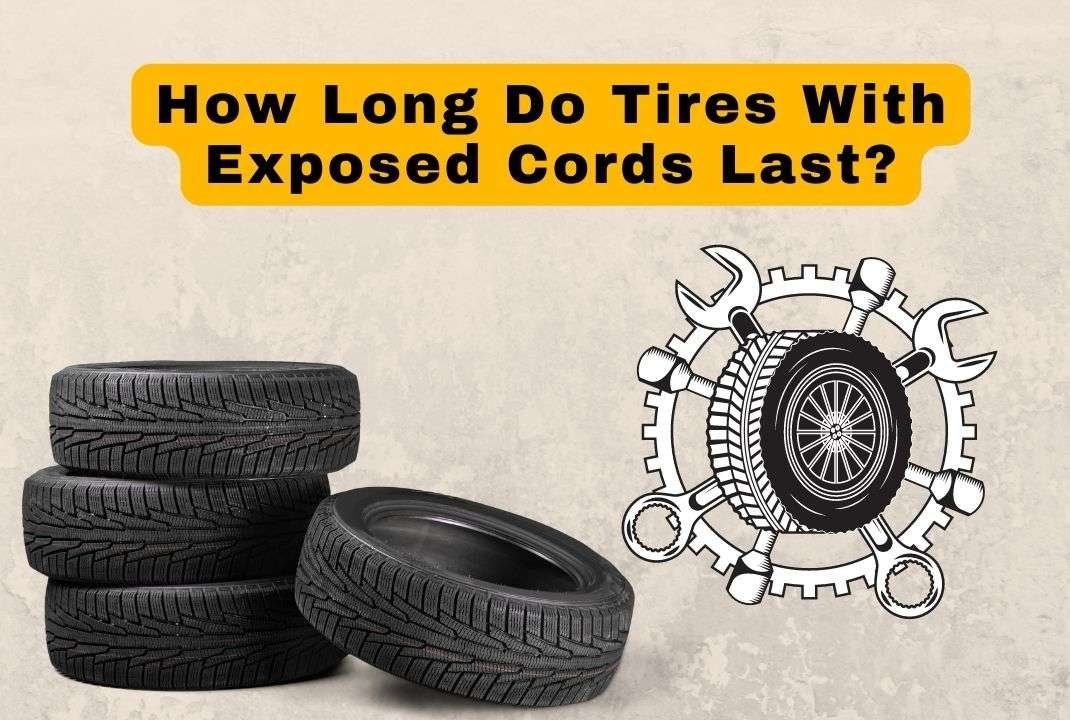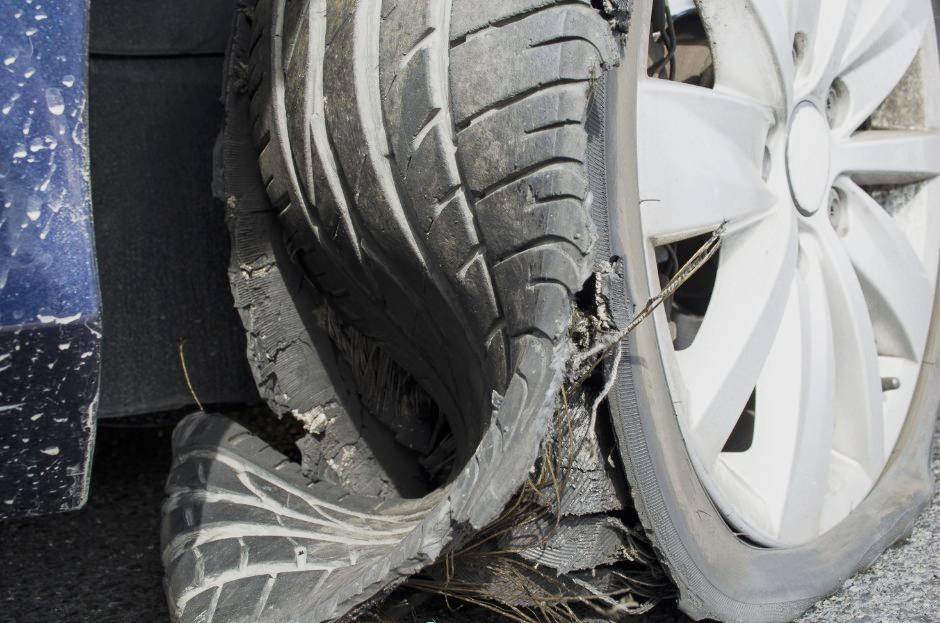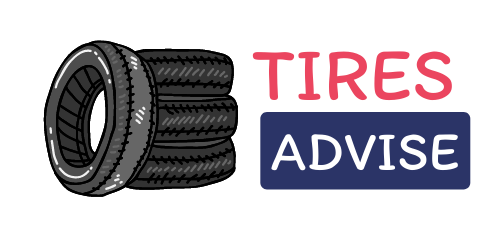
You’re cruising down the highway and suddenly, you hear a strange noise coming from your wheels. You pull over to investigate and find that your tires have cords exposed, giving them a rough and bumpy texture that can only mean one thing: it’s time to replace them. But how long have you got before these bad boys give out on you completely?
Well, that depends on a variety of factors. Your driving habits, road conditions, and tire maintenance all play a role in the lifespan of your wheels. Generally speaking, most tires with cords showing last between 75 to 100 miles before needing to be replaced. However, if you’re frequently driving on rough roads, carrying heavy loads, or neglecting regular tire rotations and alignments, your tires may wear down faster.
How Long Can You Drive On A Tire With Wires Showing

It is not recommended to drive on a tire with wires showing, as this can pose a serious safety risk. However, if you find yourself in a situation where you must drive on such a tire, it is important to know your limitations.
Based on industry standards, you can drive for approximately 75 to 100 miles on a tire with wires showing before it becomes completely unsafe to drive on. However, this estimate can vary depending on a number of factors, such as the type of vehicle you are driving, the speed at which you are traveling, and the condition of the road.
It is important to note that driving on a tire with wires showing can cause further damage to both the tire and the vehicle. Additionally, it can increase the risk of a tire blowout, which can be extremely dangerous, especially at high speeds.
Hence according to the Ontario Ministry of Transportation, tires with exposed cords or treads should be replaced as soon as possible. This is done in order to ensure your safety and the safety of others on the road.
Factors affecting tire lifespan with exposed cords
A tire’s lifespan is critical for drivers as it impacts their safety. If cords are exposed, a tire’s lifespan can be shortened, and the danger of accidents can increase. Here are the factors that affect a tire’s lifespan when cords are exposed:
1. Severity of cord exposure:
One of the critical factors that affect the lifespan of a tire with exposed cords is the severity of cord exposure. When the tire cords are exposed due to wear and tear or other factors, the level of severity can determine how long the tire will last.
If the cords are only slightly exposed, the tire may still be safe to use, but if the cords are significantly exposed, it may be time to replace the tire as it can lead to blowouts and other hazards.
2. Tire type and quality:
Each type of tire possesses varying levels of resiliency and resilience towards the natural wear and tear of the road. Take, for instance, high-performance tires that, due to their design, may have a shorter lifespan than their all-season counterparts.
Furthermore, the quality of a tire cannot be disregarded, as those constructed with superior materials and techniques tend to have a longer lifespan than those with lower standards.
3. Driving conditions and habits:
The driving conditions and habits can also have a significant impact on the lifespan of the tire. Driving on rough roads or over potholes can cause damage to the tire cords and accelerate wear and tear.
Similarly, driving at high speeds or sudden braking can also cause the tire to wear out faster. Plus, taking sharp turns at high speeds can put extra strain on the tire and increase the likelihood of more cords becoming exposed.
Tire Cords Showing From Sidewall (Will it be dangerous?)
It would be dangerous to drive on tires with cords showing from the sidewall. This is because the cords are the structural components of the tire that provide strength and stability. When they are exposed, it means that the tire is damaged and compromised, making it more prone to blowouts, punctures, and other types of failure.
Additionally, the lack of tread on the tire makes it more difficult to maintain traction on the road, especially in wet or slippery conditions. This can lead to loss of control of the vehicle and increase the risk of accidents.
Therefore, it is strongly recommended to replace the damaged tires as soon as possible with new or used ones that are in good condition to ensure safe driving.
Dangers Of Driving On Tires With Exposed Cords
Cruising down the road on tires with bare wires is a perilous game, fraught with hazards that could result in grave accidents. Below, we’ve outlined some of the risks associated with driving on such tires:
1. Blowouts: Tires with exposed cords are more likely to experience blowouts, as the cords can become damaged and weakened, leading to sudden tire failure. This can be especially dangerous at high speeds or when driving on rough roads.
2. Reduced Traction: When the cords on your tires are uncovered, it’s like they are losing their grip on reality, making it hard for them to hold on to the road. As a result, your vehicle’s ability to stay on track and stop abruptly is compromised, putting you and others in danger of accidents and potential loss of control.
3. Hydroplaning: Hydroplaning occurs when a vehicle’s wheels lose contact with the road and glide on a thin layer of water. Be wary, though, as tires with bare wires are particularly susceptible to this perilous occurrence. This can cause a driver to have a harder time maneuvering their car on rainy days, leading to a potentially dangerous situation.
4. Uneven Wear: When threads on tires are left bare, the wear and tear of the road become uneven, which can result in issues with handling and alignment. This can ultimately lead to more damage to the tires and even heighten the possibility of accidents.
5. Reduced Fuel Efficiency: Wheels with visible cords can increase your vehicle’s fuel consumption. This is because the engine has to work overtime to make up for the lack of support and grip provided by the tires.
6. Increased stopping distance: Tires with showing wires have less tread, which means they take longer to stop the vehicle. This can increase the stopping distance, making it harder to avoid an accident.
Causes of Exposed Tire Cords
The tire cords are crucial for the wheel’s structure and strength. When they’re uncovered, it weakens the tire, resulting in a higher risk of blowouts. Here are the reasons why tire threads become visible:
A. Tire aging and wear
As tires age, the rubber becomes brittle and less able to flex and absorb impacts. This can cause the tire to develop cracks and other damage, which can eventually expose the underlying cords or steel belts. Moreover, if the tire is regularly driven on rough or uneven surfaces, it can wear down more quickly, increasing the likelihood of cord exposure.
B. Underinflation or overinflation
When a tire is underinflated, it doesn’t have enough air pressure to properly support the weight of the vehicle. As a result, the edges of the tire have to bear more strain and stress than they were designed to handle, and the middle is pushed inwards. This increased strain on the edges can cause the tire cords to become exposed.
Conversely, Overinflated tires become stiffer and harder, causing more stress to be concentrated in the center of the tire. The increased pressure in the center of the tire may cause an undue burden, resulting in uneven wear and tear. The central part of the tire is susceptible to rapid erosion, which, in the long run, can expose the cords of the tire. Furthermore, when the tires are overinflated, the ride quality may become jarring, and the traction on the road may diminish as the tire’s contact patch is reduced.
C. Road hazards and damage
This refers to situations where a tire encounters a foreign object, such as a sharp rock or piece of metal, on the road. Such objects can penetrate the tire’s surface and damage the rubber, leading to the cords becoming exposed over time.
Plus, potholes, uneven road surfaces, and other road hazards can cause impact damage that may weaken the tire’s construction and cause cords to become visible.
D. Manufacturing defects
In the realm of tire production, the term “manufacturing defects” encompasses a range of issues that can occur during the creation process. These issues can create a chink in the armor of the tire’s construction, leaving tire cords vulnerable and exposed.
Faulty materials, improper assembly, and a lack of quality control can all contribute to the premature wearing down of the tire and the eventual emergence of its wires from the wheel.
E. Improper tire repair or installation
When a tire sustains damage like a tear or puncture, it can be patched up to prolong its lifespan. But, if the repair work is not carried out appropriately, the cords present in the tire may get exposed. This can happen when the puncture is situated too close to the sidewall, or if the repair is performed using improper materials or techniques, leading to tire weakness and visibility of cords.
Likewise, when a tire is installed on a wheel, it needs to be properly aligned and balanced to ensure even wear and performance. If the tire is not installed correctly, it can cause the wires to become visible. For example, in case the wheel is not seated properly on the rim or if it is inflated to the wrong pressure, it can cause the tire to wear unevenly and lead to cord exposure.
FAQs
What happens if you drive on tires without tread?
Driving on tires without tread can be extremely dangerous, especially in wet or slippery conditions. These strings on tires help to channel water away from the tire and maintain traction on the road. Without tread, the tire is more likely to hydroplane on wet surfaces, causing the driver to lose control of the vehicle. Furthermore, tires without wires may not provide enough grip on the road, leading to reduced handling and longer stopping distances.
How do I know if my tire tread is good?
To check if your tire tread is good, you can use the penny test. Place a penny into the tread of your tire with Lincoln’s head facing down. If you can see the top of Lincoln’s head, then your tread depth is less than 2/32 of an inch and it’s time to replace your tires. If the top of Lincoln’s head is covered by the tread, then your tires have sufficient tread depth. You can also use a tire tread depth gauge to get a more precise measurement. It’s important to have good tire tread for proper traction and safety on the road.
A Final Note
In a nutshell, while it may be tempting to continue driving on tires with exposed cords, it is crucial to prioritize your safety and replace them as soon as possible. The lifespan of tires with exposed cords can vary greatly depending on various factors, but it’s always better to err on the side of caution.
Remember, tires are the only part of your vehicle that makes contact with the road, so it’s important to keep them in good condition to ensure proper handling, braking, and overall performance.
Stay Safe!
